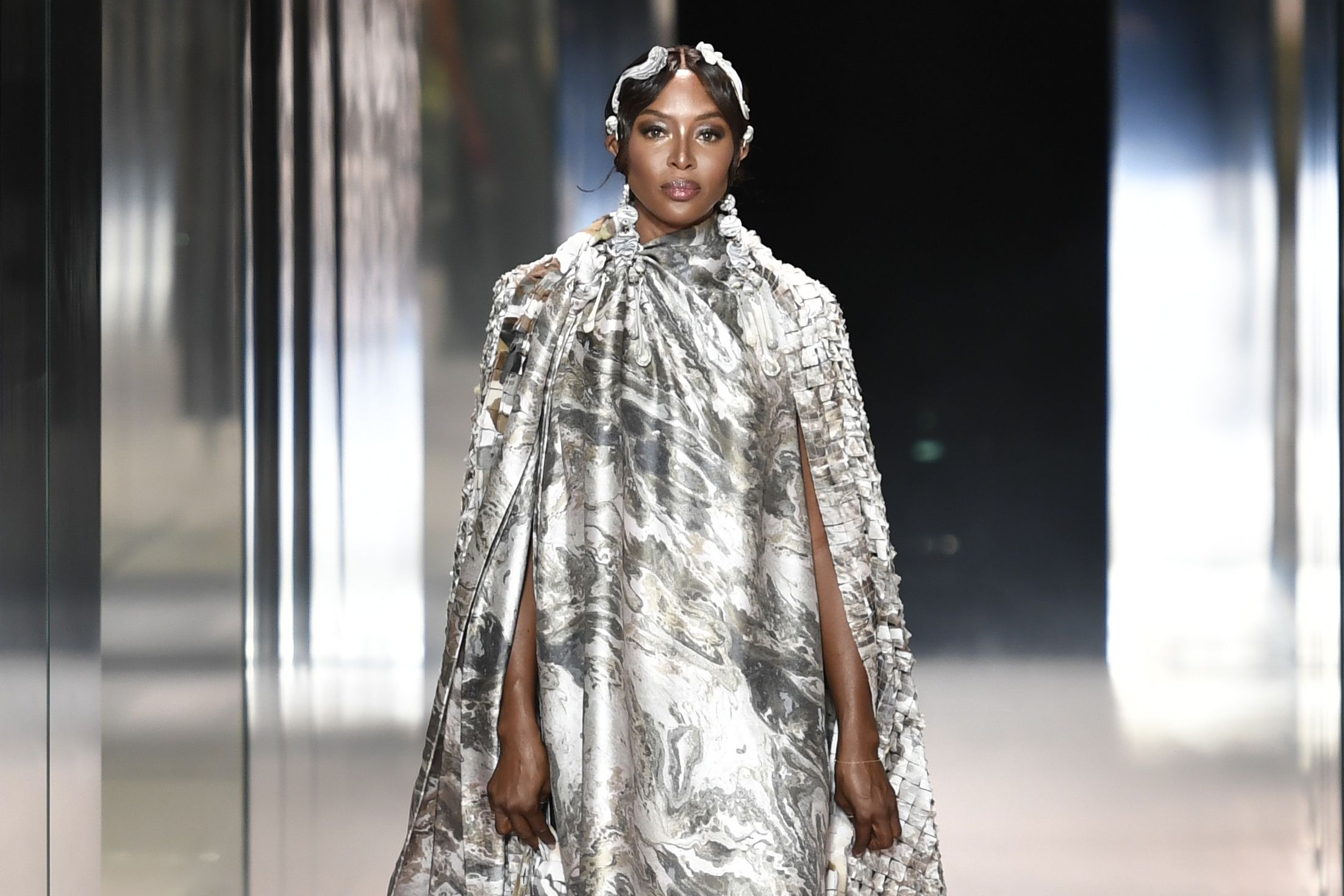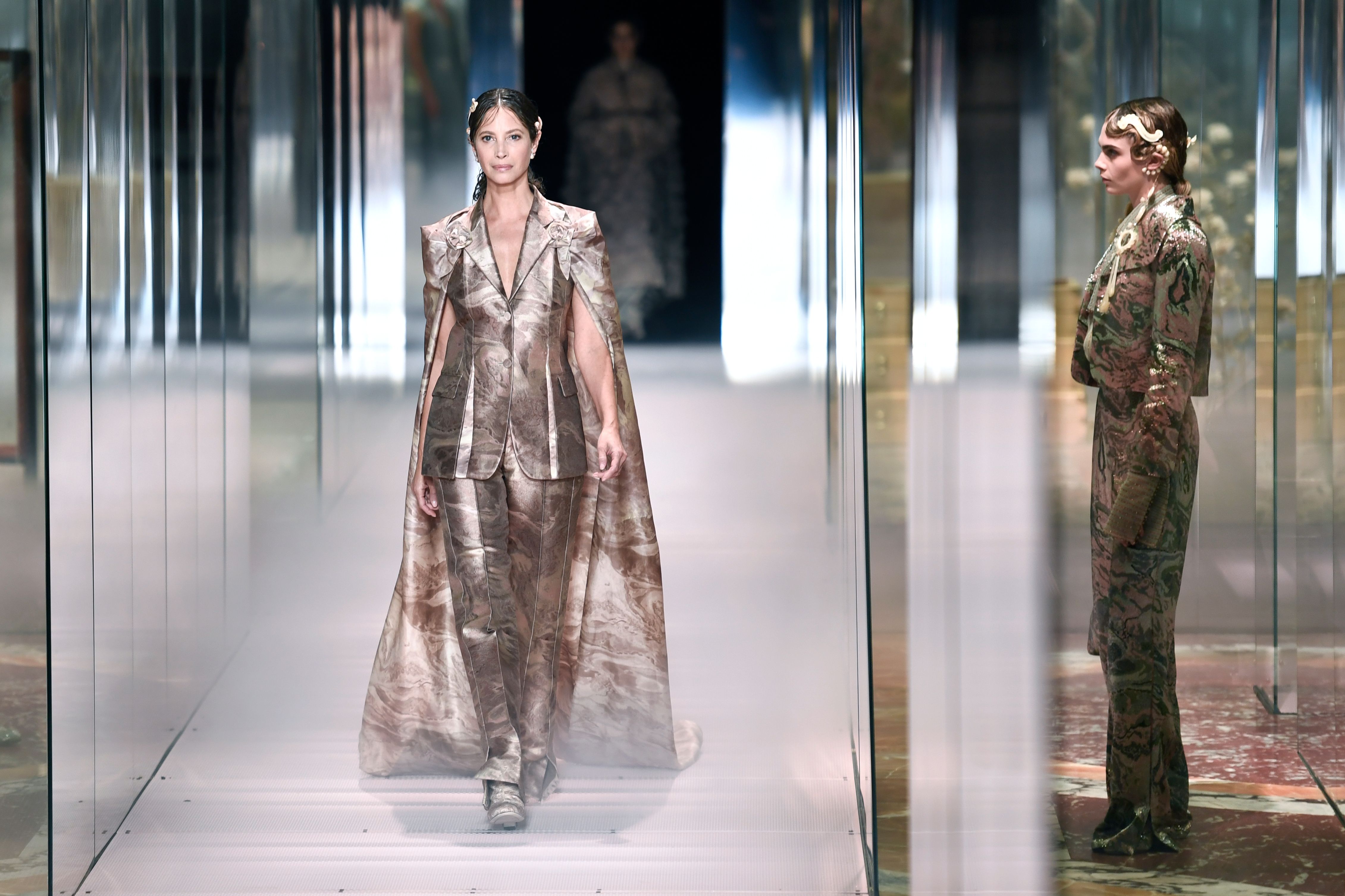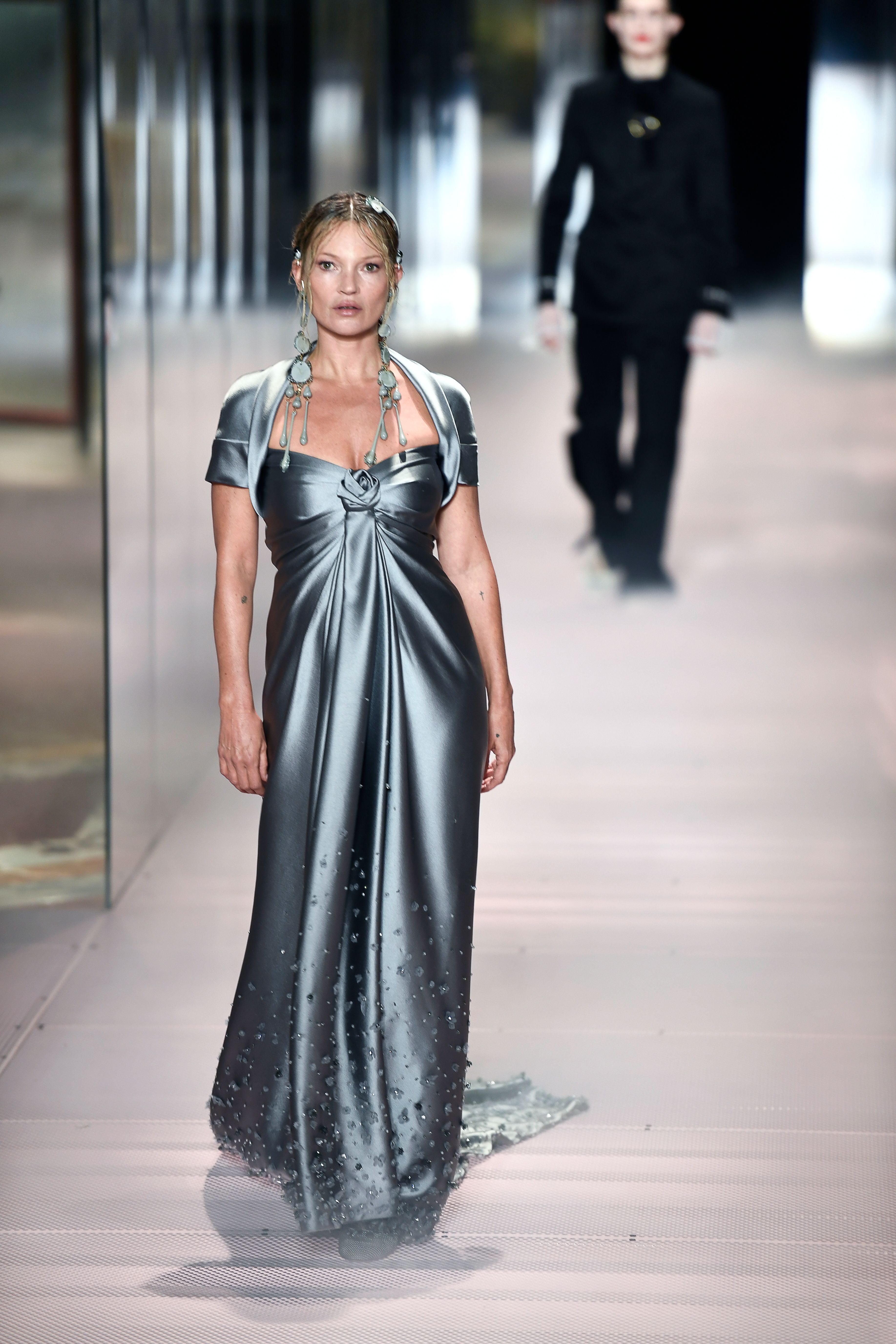News feed

In case you missed it, this week saw Fendi put on a splendid show for Paris Couture Week that included some big names – many of whom were cast from the book of 90s model royalty. Christy Turlington, Kate Moss, Naomi Campbell, and even honorary supermodel Demi Moore, graced the runway for the label’s first collection under new creative director Kim Jones.
The casting of such stellar vintage is not an anomaly, however. In 2019, Turlington closed the fall 2019 Marc Jacobs ready-to-wear show while in the same year Campbell was guest of honour on the runway for Valentino couture. Last year, Amber Valetta walked for both Isabel Marant and Versace, while back in 2017 Versace broke the internet when they presented an entire tableau of golden girls (literally, figuratively) – Carla Bruni, Claudia Schiffer, Naomi Campbell, Cindy Crawford and Helena Christensen for the label’s spring 2018 collection.
Of course, adding some nostalgic spice to an international show is calculated PR genius. It spurs plentiful headlines that bleed beyond the industry tomes and into the world of mega-clicks. These women hail from the glory days of 80s and 90s fashion superstardom when just about all of them were household names. And they’ve remained A-listers, veterans of a fashion game they basically invented.
But beyond the cynicism and all the fairytales, the trend towards reviving names such as Moss and Turlington and Campbell helps to dash the industry’s long held preference for youth. The average age for a runway model these days is 21 or younger. These women are 47, 52 and 50 respectively. Even if they are unicorns (not all women born circa 1975 could relate to marching an international runway while wearing couture next to Bella Hadid), their return is highlighting the fact that fashion has for too long been a key player in crafting the cookie cutter ideal of what a desirable women should look like. What her shape should be, what her age should be. And while body image and racial diversity has been, quite correctly, at the forefront of activism, ageism has also long held a place in the high fashion clique.


Last year, Kering (parent company to brands like Gucci, Saint Laurent and Balenciaga) committed to stop using girls under the age of 18 in their shows. As reported by Highsnobriety, they were forced to review their measures after 2011 documentary Girl Model shone a light on the issue. It brought some attention to the underage issue but, however, didn’t mean they were quick to slide their age criteria much further up. While most designers themselves are well over 40, very few are known for filling their shows with women their own age. With the exception of renegades like Simone Rocha, Rachel Comey and 11 Honoré who have cast a range of ages, overall, it’s whippersnappers that runway fashion still fantasises, fuelling the archaic, patriarchal belief that women over a certain age can no longer be glamorous enough to “sell” a collection.
The irony, of course, is that the major buyer within the premium fashion market is…not 21. According Boston Consultancy Group the average age of a luxury customer is 38. And, in the context of the recent couture week, the age of women able to purchase pieces of such exclusivity would be older still. In fact, if you look at the history of French couture, its premise was to give women of the aristocracy access to bespoke fashion – a clientele that was most certainly at the mature end of the spectrum.
So, does this mean modern fashion is ageist? Probably. Its a prejudice that has gained traction over the last few decades and is largely in thanks to our appetite for very pretty women in very pretty clothes who also often happen to be very young. Designers might have mixed the Kool Aid, but we all drank it and asked for more.
Updating the vision is hard but it will be up us to demand industry leaders change things up. By the end of this decade, women who are currently 31 will be turning 40. Right now, they’d be considered core buyers and at an age of acceptably youthful relevance. So, in nine years will these same women be ready to call it fashion quits? Beginning their relegation to the no-name area of department stores, accepting that their time has been?

For women over 40 to still be seen as culturally passé and not a preferred target for “It” brands is not only offensive but, over the next decade, could sound the death knell for such labels. Alienating high earning women just because they’re no longer 20-something would mean rejecting a huge portion of potential buyers, and a large part of of an ever-ageing population – a snobbery most brands can no longer afford. The whole discourse around “anti-ageing” or “fighting ageing” needs to change – we need to stop giving proverbial medals to celebrities who manage to look 25 when they’re 50. It’s a frightfully one-gendered problem that, at its core, is completely impossible. Ageing is not only natural, it’s inevitable. Looking after yourself is one thing but giving wind to this ubiquitous madness (like a particular current advertising campaign that shouts “I just don’t have time for wrinkles!”) is pure silliness. And the irony is laughable.
Perhaps this penchant for returned 90s supermodels will forge a conversation beyond gimmick and pave a new way for the future. Perhaps Bella and Gigi will walk for designers until they decide to retire at the age of 75, or 85. Perhaps women who are mothers, or grandmothers will no longer feel they have to go looking for age-appropriate stores at the mall. Perhaps women of all ages can be seen as worthy of great style and represented in turn on the international runway.
In the meantime, the Instagram post of Shalom Harlow, Carolyn Murphy and Amber Valetta hanging out on a bush walk two weeks ago is the only kind of age-defying we should be buying into – supermodel legends not giving a flying f…









